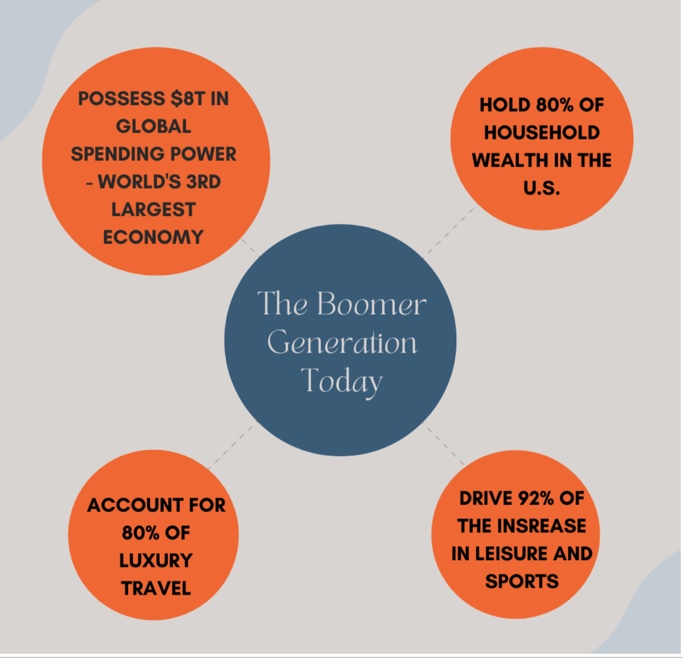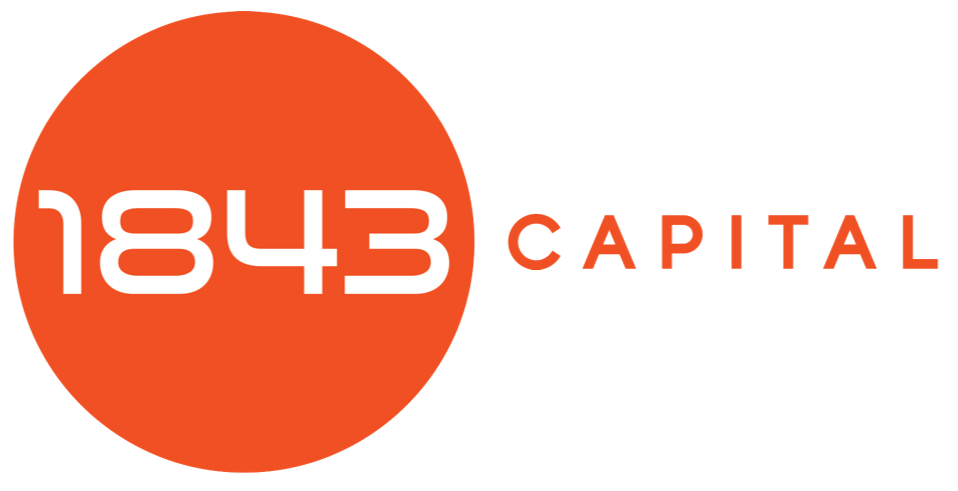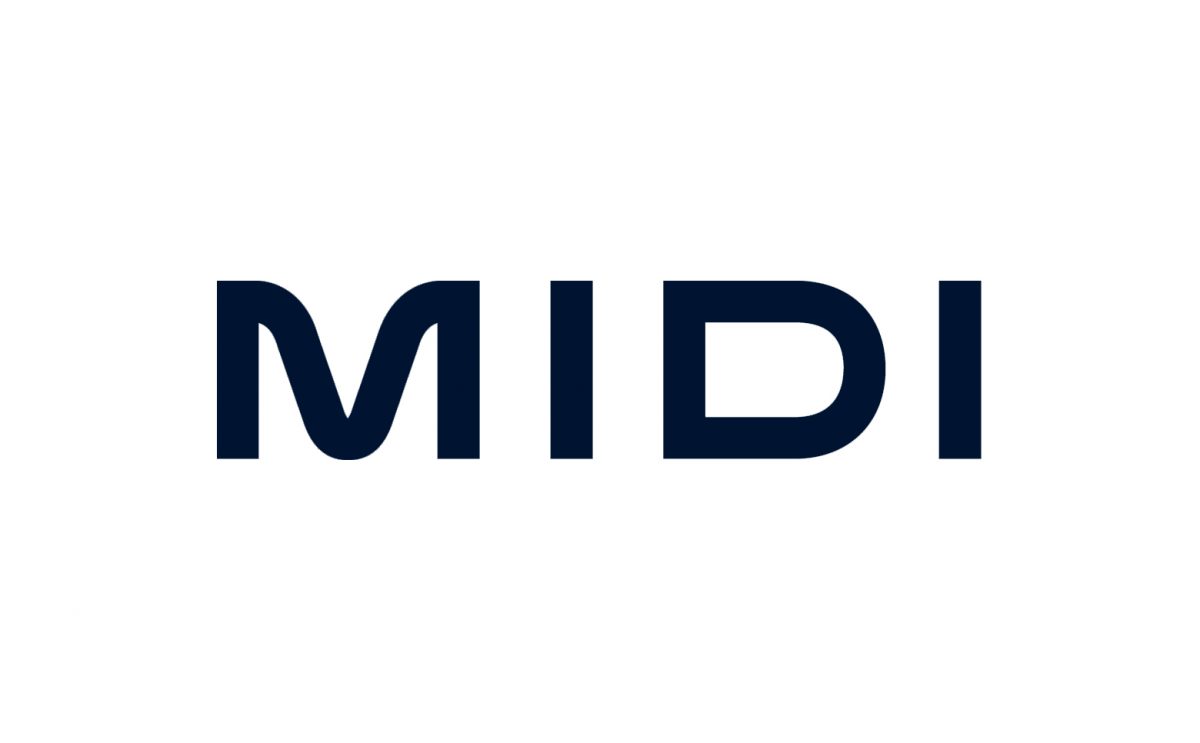AgeTech is a massive investment opportunity in venture capital characterized by tech-based solutions that seek to transform aging. As the global population ages and consumers over 65 continue to work, travel, exercise, far longer than previous generations, significant market opportunities have emerged, and only a fraction of businesses have developed strategies to address them. Further, the dramatic shift in the global demographics, by 2030 20% of the U.S. will be over 65, is creating major social issues that must be addressed. A growing venture community, including 1843 Capital, and repeat entrepreneurs are among those focused on a new way of thinking about aging, making AgeTech today’s rich investment opportunity.
AgeTech: Aging…But Don’t Call Me Old
The Boomer generation, now 58-76 years old, has been significantly reshaping U.S. society since WWII. As they hit their silver years, Boomers are once again pioneering changes in the global workplace, healthcare services, and the consumer goods market. Their “don’t call me old” attitude begets new behaviors from their predecessor, the Silent Generation. With $30T in spending power by 2030, and a radical change in the way Boomers are spending their time, entrepreneurs and venture capitalists have awoken to the massive opportunity.

65’s the new 45…
New behavioral trends in today’s seniors require new products and services – enter the era of AgeTech. Today’s older adults are more educated and technologically savvy than previous generations. They’re living and working longer, staying more fit, and traveling more. Their 60s, formerly the beginning of the “retirement years,” now consists of pickleball and global travel, continuing education, and mentoring and caregiving for grandchildren and parents. This means there’s a huge opportunity and critical need to reimagine products and services for Boomers.
Boomers are Ignored
Despite the outsized demographic and related spending power, large advertisers are still mostly ignoring the 50+ demographic in their marketing. As recently as 2021, AARP found that while one-third of the US population is over 50, they show up in only 15% of media images. And, those 50+ make up one-third of the workforce but only 13% of advertising images of adults show them working. The Global Coalition on Aging found that only 15% of businesses have a strategy for aging consumers. This huge disconnect between legacy businesses focus and reality means there’s a fertile playing field for new companies thinking in new ways.
50+ will outnumber children by 2035 as Boomers age and the birth rate continues to fall putting significant pressure on already heavily strained healthcare systems.
HEALTH – INDEPENDENCE – SECURITY
AgeTech encompasses broad segments such as health and wellness, independence, and security.
Health: Health is highly valued to the over 50 demographic and, in turn, costly. In 2000, the Medicare-eligible population in the US numbered 35.1 million. By 2030, this number is expected to increase to 69.7 million. Medicare’s annual costs are projected to be $259.8 billion in 2030. As the Baby Boomer generation reaches retirement age, the need for Medicare and age-related healthcare services will continue to rise, taking healthcare expenses with them. Technology solutions that address cost savings in this sector will be the most successful.
Controlling the rising costs of healthcare is a major concern for the Baby Boomer generation, as anticipated expenses outstrip what many retirees have in their savings for these golden years. Healthcare providers will seek innovative ways to keep health care accessible and affordable both for Baby Boomers and those who follow them. This includes essential actions such as:
- Ensuring proper staffing is available for healthcare facilities.
- Creating senior-care facilities that affordably meet the needs of the aging population.
- Utilizing technology to its full capabilities for better efficiency and lower expenses.
- Implementing smart workflows that control costs in healthcare facilities.
Independence: On the flip side of all the working, traveling, and enjoying life, Boomers are quite often responsible for their parents. 92% of 80+ Seniorsrequire meaningful support for physical and mental health conditions as they age in-place in a desire to maintain their independence.
Unpaid caregiving is a $470B economy according to a study by Pivotal Ventures Report and lower birth rates and a burgeoning older population means that the ratio of caregivers to patients will drop to 4:1 from 7:1 by 2030. Senior mental health needs are also large in number and expensive. 8 million people in the US have Alzheimer’s today and that number will double by 2050. Furthermore, seniors with cognitive challenges are 3x more likely to end up in the ER and will cost nearly 3x as much as an average Medicare patient without such challenges. Two recent 1843 Capital investments, Kinto and Rippl, offer assistance to caregivers in a scalable fashion to provide better care with lower costs.
Security: One area we’re interested in is financial longevity and security given the retirement funding gap in the US is estimated at $3.68 trillion(2). Despite an awareness they should be saving more, Boomers surveyed in 2019 reported that 45% have no retirement savings and of the 55% who do, nearly one quarter have less than $100,000(3). When we use the term longevity and wellness, we mean both financial and physical wellness. There are a number of new players working toward this goal, better aging through establishing good financial habits, relationships, and safeguards, including Keen, which reimagines the Medicare enrollment process, and Fraudfindr, which quickly identifies and resolves instances of fraud against seniors, preventing repeat victimization.
Opportunities and experienced founders abound in this space, but because it’s still considered emerging, we believe there’s outsized potential for above-average investment returns.
Notes:
(1) https://www.investin.care/
(2) Jack VanDerhei, Ph.D., “Impact of various legislative proposals and industry innovations on retirement income adequacy,” ebri.org, January 20, 2021.
(3) Insured Retirement Institute, 2019,
https://www.irionline.org/research/article/boomer-expectations-for retirement-2019/






